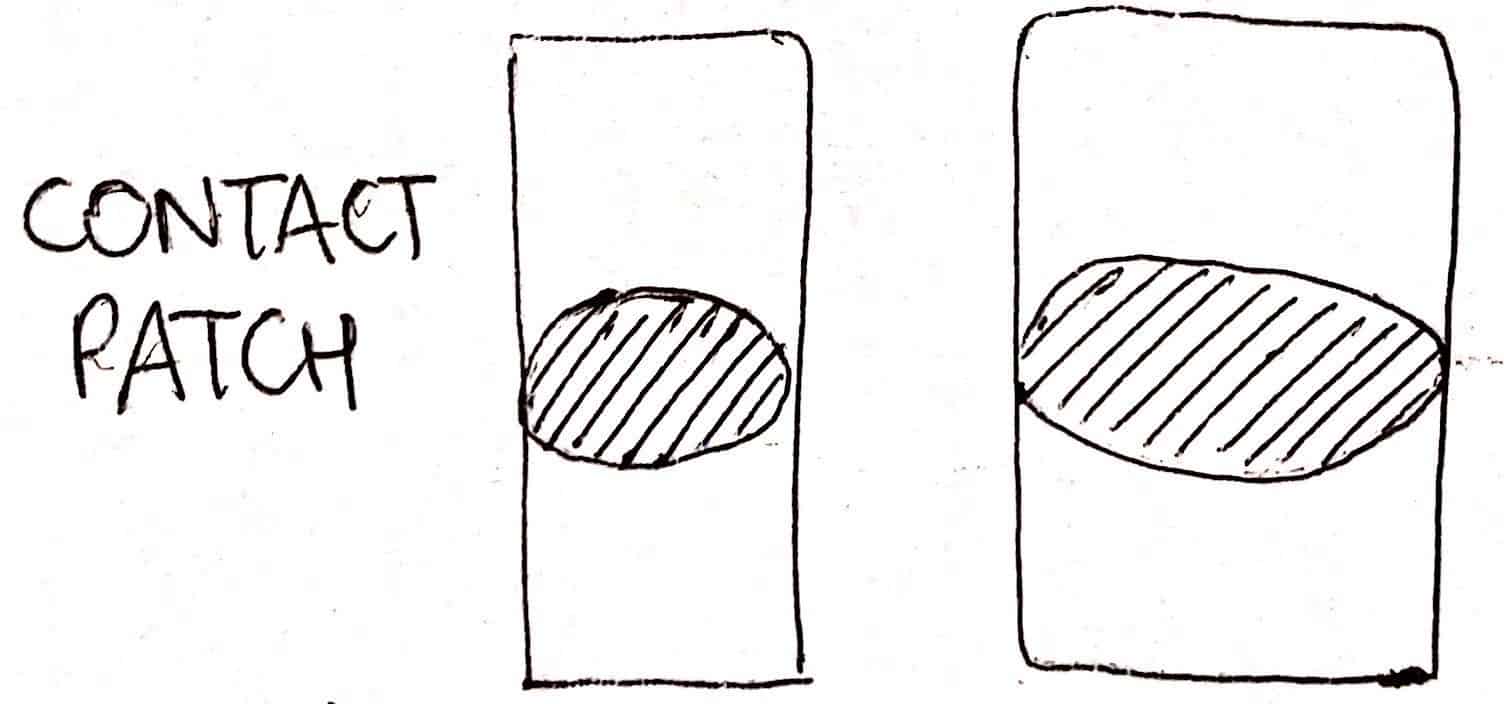Why is tyre contact patch so important on race car
THE ADVANTAGE OF A LARGER TYRE CONTACT PATCH
What is the tyre contact patch?
The main characteristic of the wider tire is the greater contact surface between the tire and the ground. The larger the contact surface, the more the tire is able to counteract lateral, longitudinal and vertical loads.
What we often hear is that a greater contact surface, due to the wider tire, guarantees a “greater grip“. We’re going to further investigate the contact patch role in racing and in everyday situations.
 The tyre contact patch role in racing.
The tyre contact patch role in racing.
In reality, the so-called “grip” if understood as the friction coefficient, remains exactly the same, but increasing the contact patch increases the force that can be countered; we mathematically analyze:
R=μFz where Fz=pA
Where μ is the friction coefficient (static or dynamic), p the pressure exerted by the vehicle and A the contact surface.
It is easy to understand how by increasing area A, the value of R that we can associate both with the longitudinal and lateral force also increases.
By contrasting greater lateral forces, a wider tire can guarantee a lower slip angle (better slip stiffness).
By contrasting, instead, greater longitudinal forces, it manages to guarantee better acceleration and braking.
This behavior also translates into greater reactivity to the steering inputs and an ease of control of the entire vehicle.
Contact patch and tyre wear.
A final consideration can also be made on tire wear: a wide tire has less wear for the same compound because the vertical load given by the vehicle is distributed more or less uniformly over a larger area.
Considering the slip angle as the angle between the direction in which a wheel is pointing and the direction in which it is actually traveling (we will describe in detail in the next chapter), it’s clear the difference between a large tyre and a thin one at a defined side force.




